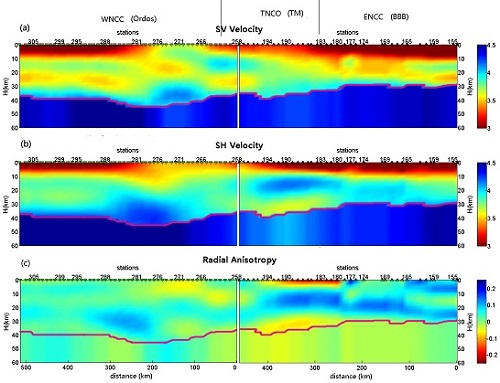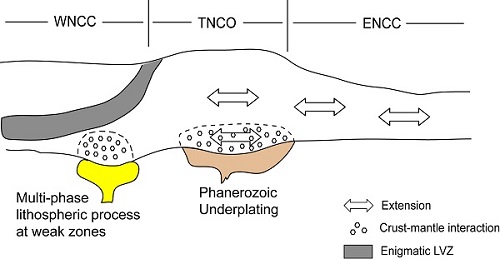Master student CHENG Cheng and his teacher CHEN Ling present the crustal shear wave velocity structure and radial anisotropy along two linear seismic arrays across the North China Craton (NCC) from ambient noise tomography.
About a half to one year long ambient noise data from 87 stations were used for obtaining the inter-station surface wave empirical Green's functions (EGFs) from cross-correlation.
The overall structural features of this region resemble those of typical Precambrian shields, in agreement with the long-term stability of the region. These features may reflect complex deformations and crust–mantle interactions, probably associated with tectonic extension and magmatic underplating during the Mesozoic to Cenozoic evolution of the region. Their structural images in combination with previous seismic, geological and geochemical observations suggest that the Phanerozoic lithospheric reactivation and destruction processes may have affected the crust (especially the middle and lower crust) of the eastern NCC, and the effect probably extended to the TNCO, but may have minor influence on the crust of the western part of the craton.

Fig. 1. (a) VSV image obtained by inverting the Rayleigh wave phase velocities from each array. (b) VSH image constructed from inversion of the Love wave phase velocities. (c) Radial anisotropy image along the two arrays. (Image by CHENG)

Fig. 2. A cartoon showing crustal modifications in the NCC implied by this study. (Image by CHENG)
Cheng et al. Distinct variations of crustal shear wave velocity structure and radial anisotropy beneath the North China Craton and tectonic implications. Gondwana Research. 2013, 23(1): 25-38 (Download Here)